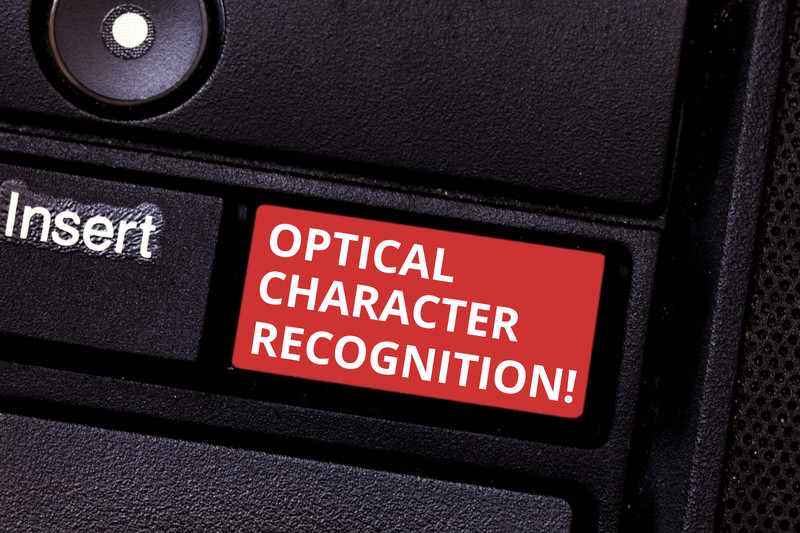This is an update to the blog “Importance of OCR and Data Extraction from Paper Documents for Businesses”
Document scanning and imaging is a process in which scanners are used to convert documents into electronic document images. Digitization is widely used in many sectors like insurance, legal, medical, and media and entertainment among others. Digitized documents ensure safety, easy storage and quick retrieval of data. It also allows editing of digitized data using advanced software. Document scanning has become an important recovery tool in recent years. By scanning critical documents and storing the digital files offsite – on a cloud server located in a different state, for example – you can preserve the essentials of your personal or business identity.

Today, there are many software available in the market that can convert images into editable text. Such advanced software helps avoid the lengthy process of typing out the entire document and then editing it. Optical Character Recognition (OCR) is one such technology that allows to convert any image file into word file
What Is Optical Character Recognition?
Optical Character Recognition is a technology that enables you to convert different types of scanned documents, PDF files or JPEG or any image files into editable and searchable data. OCR technology requires some tools to convert any document in to editable format. OCR is widely used in many industries:
- Legal: The legal industry is moving toward paperless office and they are digitizing all paper documents. In order to save space and eliminate the need to sift through boxes of paper files, documents are being scanned and entered into computer databases. OCR converts documents and helps to make them text searchable.
- Banking: In the banking sector, OCR is used for processing checks without human involvement. Checks can be inserted into a machine and the right amount of money is transferred. Although it requires some manual intervention, it reduces wait times considerably.
- Healthcare: The healthcare industry also uses OCR technology for processing paperwork. Healthcare professionals deal with huge volumes of forms for each patient, including insurance forms and general health forms. To efficiently manage all of this information, it is useful to input relevant data into an electronic database that can be accessed as necessary. With OCR, you can extract information from forms and put it into databases, so that every patient’s data is promptly recorded.
OCR is widely used in other industries like education, finance and even in government agencies as it simplifies data collection and analysis. Other technologies related to OCR, such as barcode recognition, are used daily in retail and other industries.
Extracting Data – Steps involved
- Optimizing file: The following things are fixed:
- Color is made to be uniformly black and white
- Fill up white or black space accordingly
- Check contrast and blurriness
- Extracting individual letters: Once the file is optimized it is ready for data extraction. A machine algorithm scans the document and extracts all black objects that are surrounded by white space. Each of these objects will be treated as a single letter.
- Match the pattern to each letter: Once the letters are extracted, use a filter of different fonts to try to match the pattern. If we extract a shape that looks like the letter K, we need to identify it as the capital letter “k”. The filter that returns the best connection will be identified as the letter or number that is chosen. Ensure that a wide variety of different fonts are available to create flexible filters so that the OCR can choose the most suitable match. OCR can also utilize feature detection that focuses on recognizing individual elements of a letter. An example is the letter A. The software recognizes that it comprises three separate lines, /, \ and –. This type of OCR is considered more efficient because you don’t need to have a huge number of saved filters in diverse fonts. The features used can be generated manually or neural networks can be used to create them automatically.
Many OCRs cannot read a document that is crooked or upside down and the algorithm considers it as a foreign object. The shape that the document cuts out will no longer nicely fit to any given filter and due to this the algorithm will return either nonsense or nothing at all. In such case you will need human intervention to correct the text.
With the combination of OCR and other AI techniques, you can easily extract data from invoices, receipts and other paper documents. The quality of the output and its accuracy depends the quality of the input file. Reliable document scanning companies offer data extraction using OCR technology at affordable rates and provide output according to the needs of the customers.



